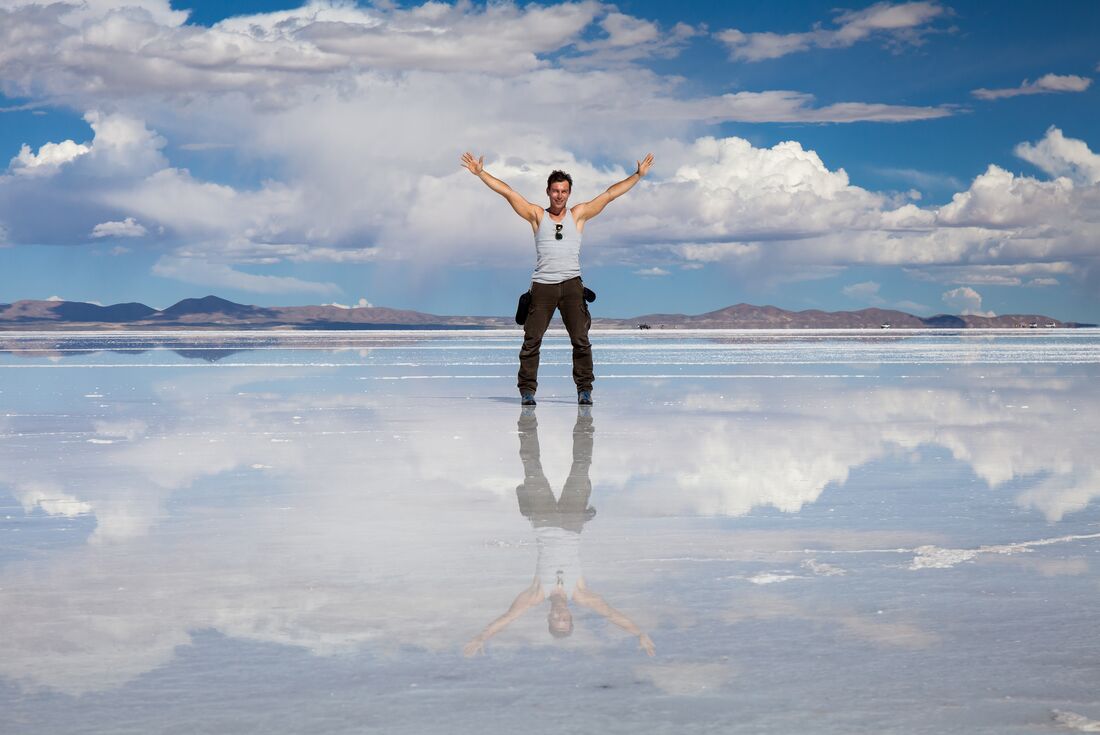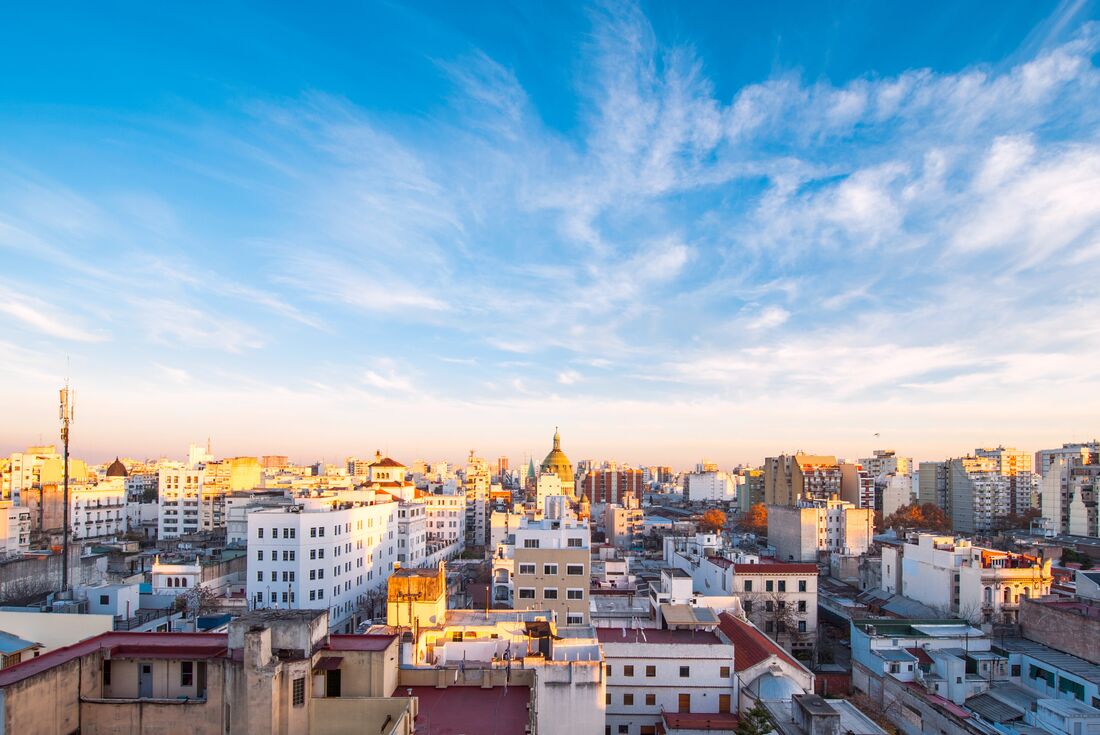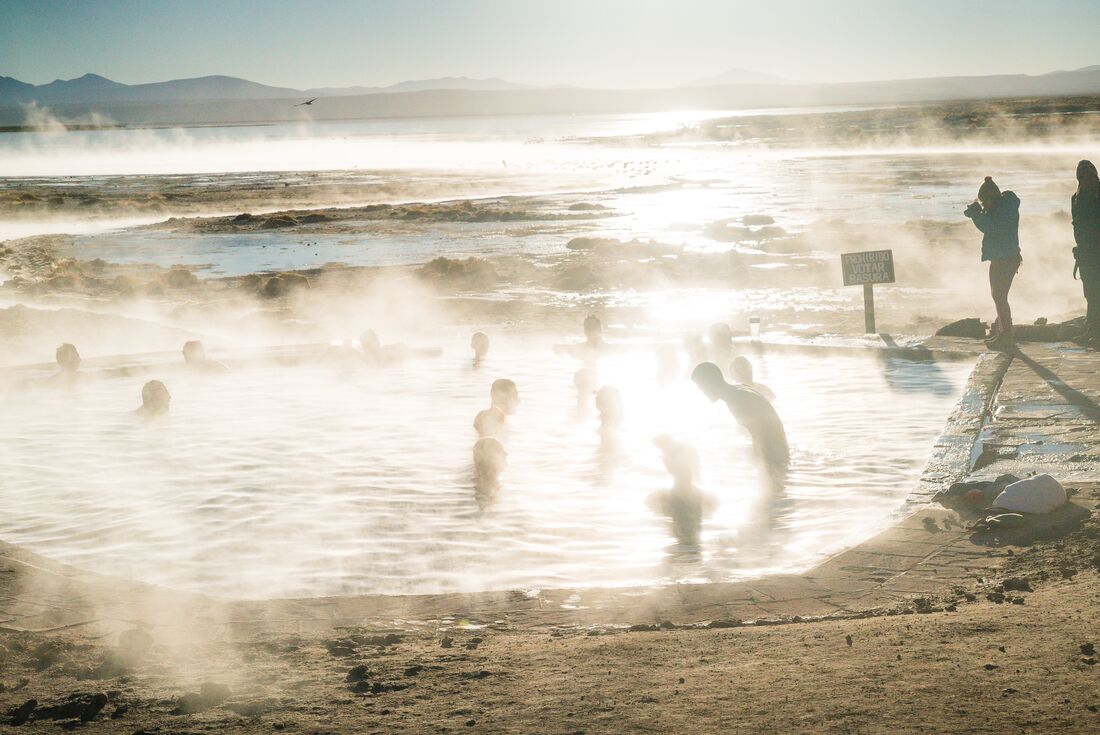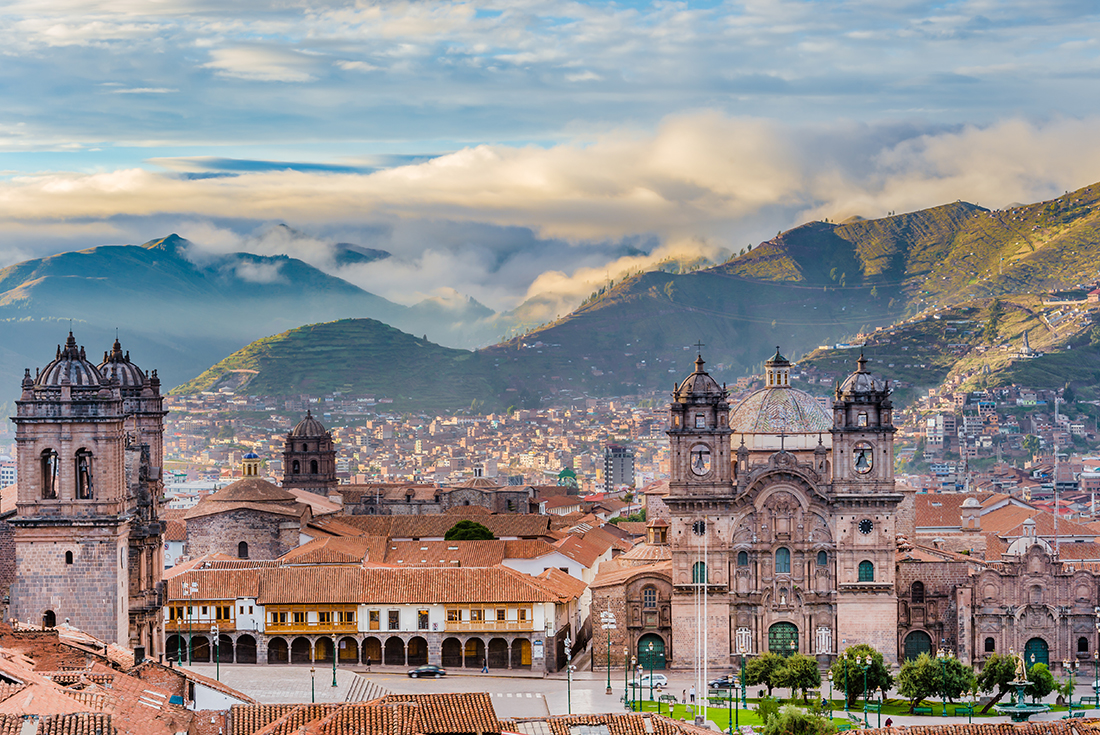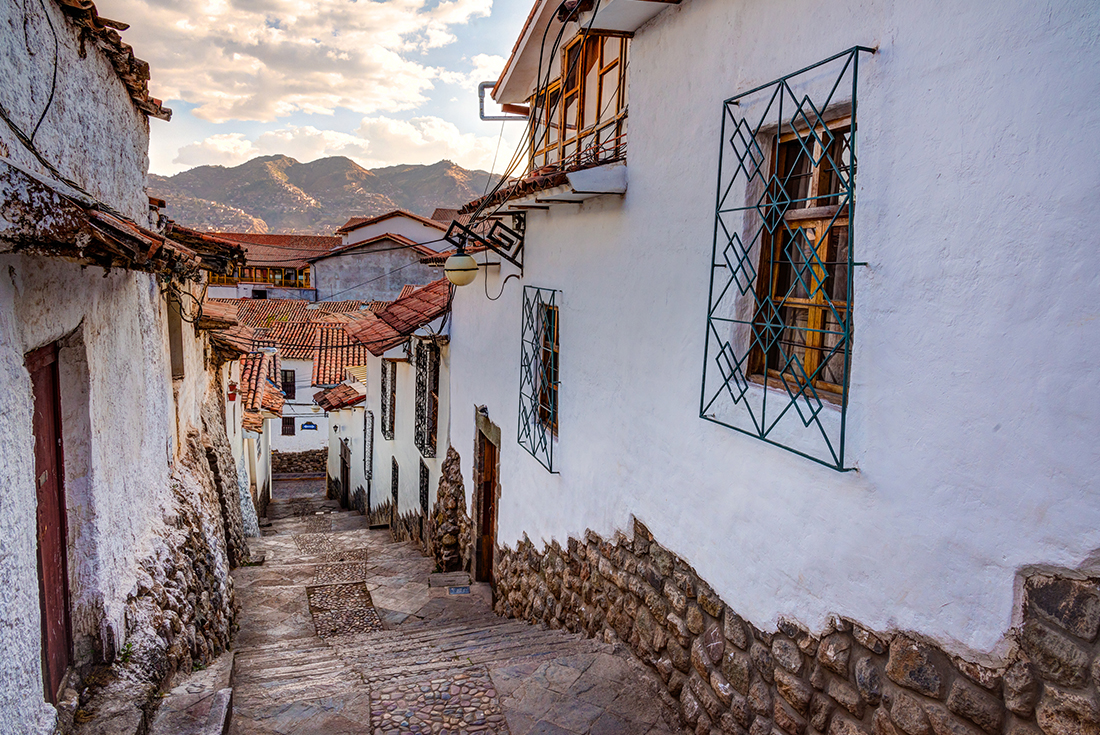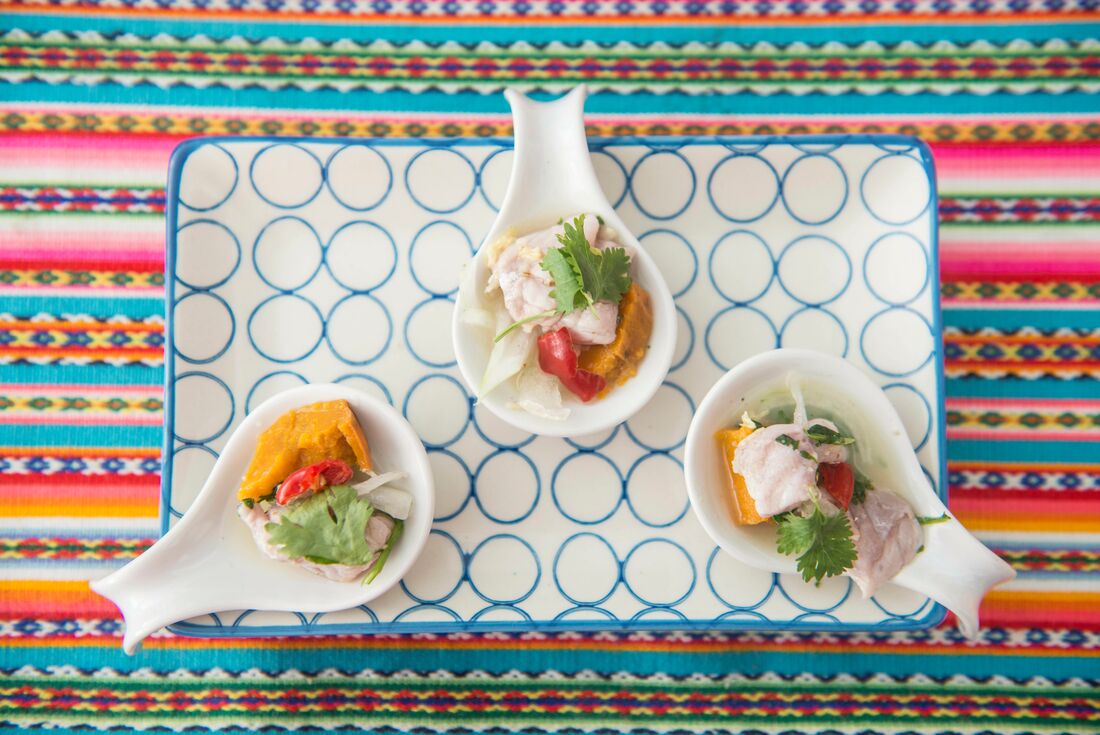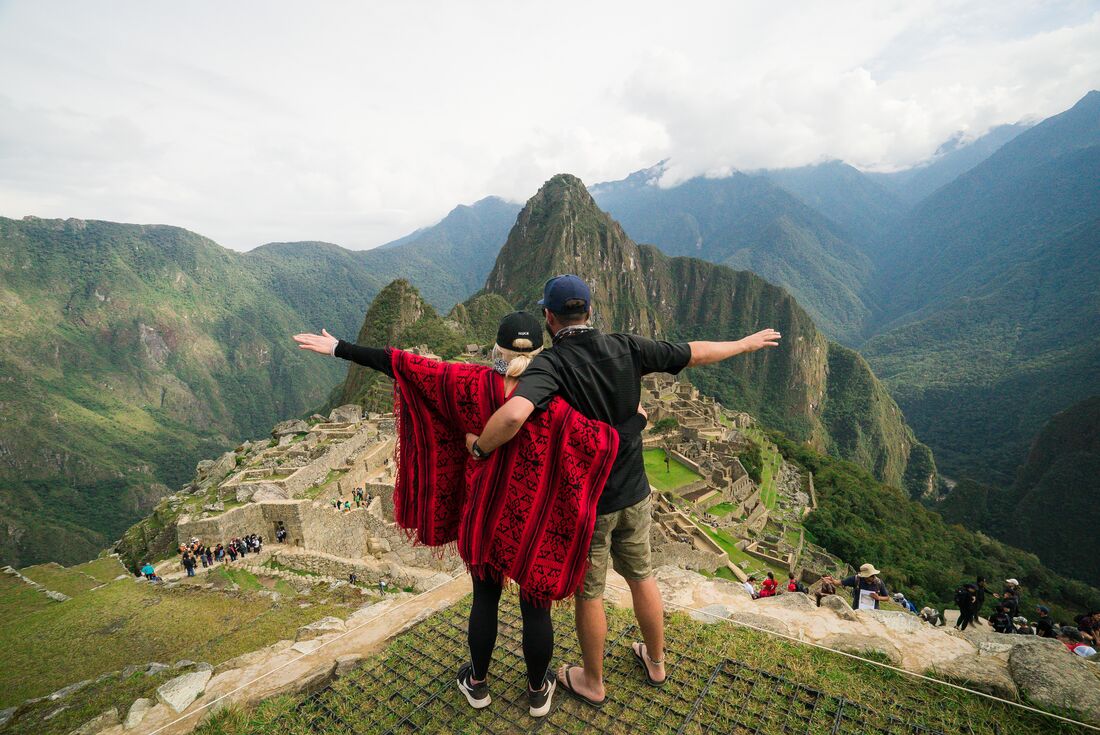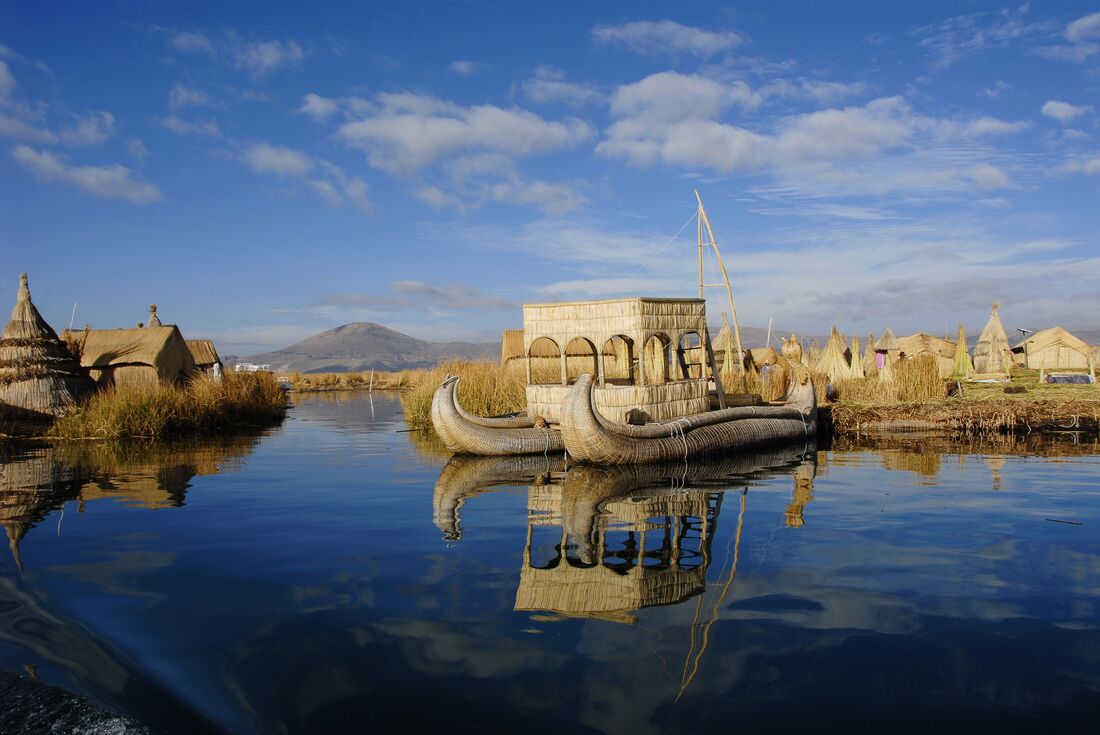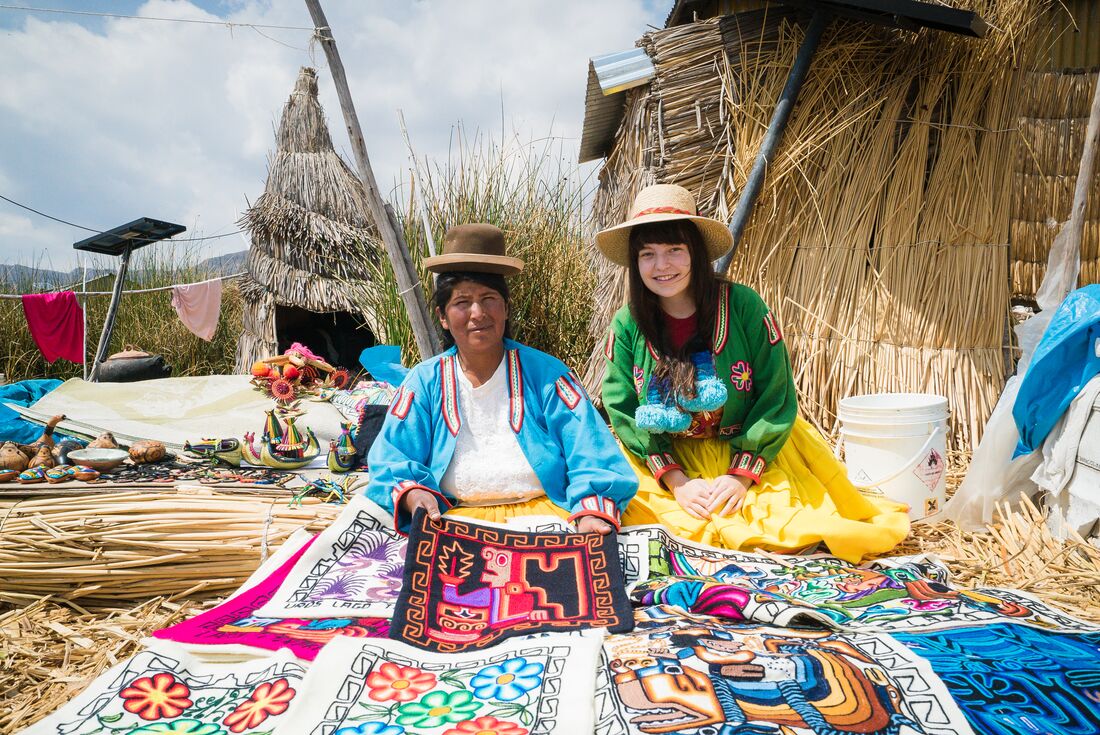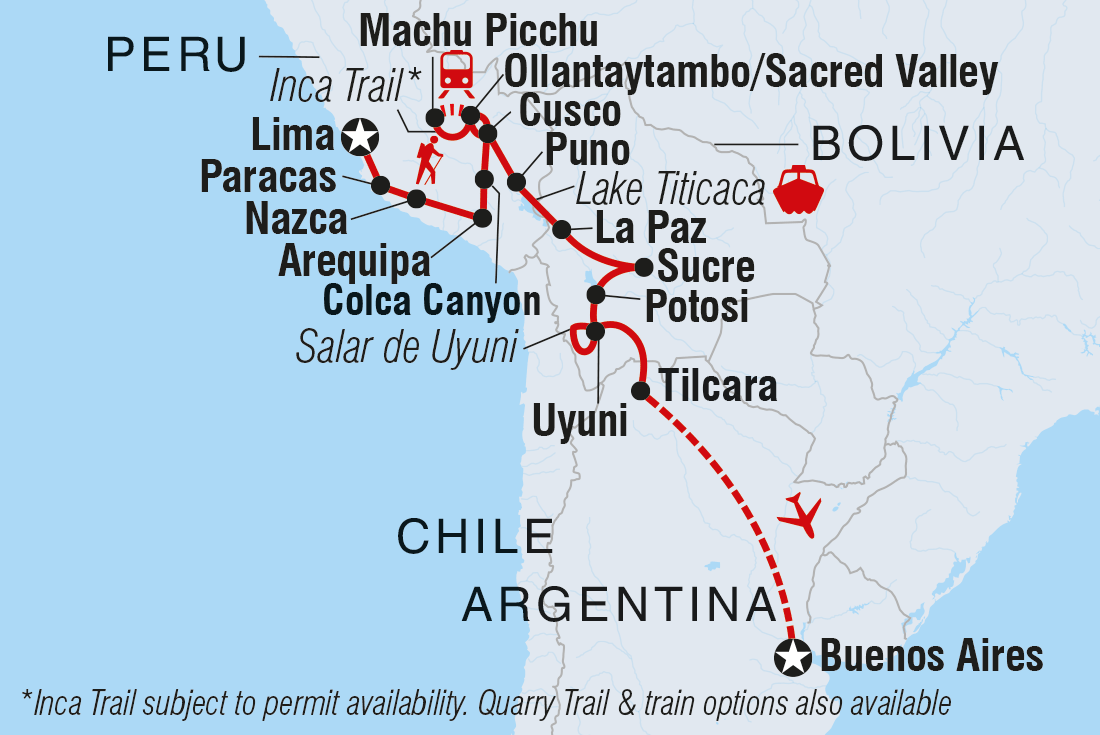SUMMARY
Follow the path of the Andes in South America on a 35-day adventure that hits both modern cities and ancient worlds. Spot birdlife circling canyons and search for signs of life in vast salt flats and lunar deserts scapes. Get acquainted with the local cultures at La Paz’s markets and the homes on the floating islands of Lake Titicaca. Learn the mysteries of the Nazca lines, wander the streets of Cusco and trek to the mighty Machu Picchu. With stops at Lima, Cusco and vibrant Buenos Aires and a local to lead the way, your South American adventure is jam-packed with fascinating experiences and plenty of space for independent travel.
TOTAL DURATION : 35 Days
GROUP SIZE : MIN 1 MAX 16
TOUR ITINERARY AND DATES
START : Lima
END : Buenos Aires
COUNTRIES VISITED : Argentina,Bolivia,Peru
Validity : 01 JAN 2023 To 31 DEC 2024
Day :1
Location : Lima
Bienvenidos! Welcome to Peru's coastal capital. Your adventure begins with a welcome meeting at 6 pm where you'll meet your group leader and fellow travellers. With no activities planned until then, why not take a walk around the vibrant Miraflores area. Alternatively, stroll along to Parque del Amor (Love Park) for a great view of Lima's beaches. After, get to know your fellow travellers better over dinner. Whether you dine with the group or sample the city's renowned food scene on your own, don't miss Peru's national dish, ceviche. If you're not a fan of seafood, there are plenty of other excellent options on offer – be sure to ask your local leader of their favourite dishes.
Day :2
Location : Lima
This morning, set out on a half-day walking tour of Lima's historical centre. Flanked by streets of ornate mansions, palaces and churches, Plaza Mayor is the best place to start any exploration of Lima. Take a walk through the old streets to get a feel for local life. On one side of the plaza is the Cathedral of Lima, which houses the remains of Lima's founder, Francisco Pizarro. Nearby is the San Francisco Monastery, with its catacombs containing some 70,000 human remains. Maybe go and browse the fresh produce on offer at Lima's central market, tasting fresh fruit and street food. Your walking tour wraps up in Lima's main square, with the rest of the day free to do as you wish. Later, perhaps head out for dinner with the group.
Day :3
Location : Paracas
Be ready for an early start as you head to Lima’s bus station around 6 am and hop on a local bus to Paracas (approximately 4 hours). During this journey it's unlikely the bus will make any stops, so please ensure you prepare yourself with water, snacks, and anything else you need. The small fishing town of Paracas is the gateway to the Islas Ballestas and the Paracas National Reserve. When you’ve arrived, you'll have the option of visiting Paracas National Reserve today with a local guide. The duration of the tour is around 2.5 hours, allowing you to enjoy the beautiful landscapes and expansive desert. For some local food specialties back in town, head to the boulevard near the beach and try some Tejas – small sweets made from nuts and dried fruits.
Day :4
Location : Nazca
This morning, there may be a chance to visit Islas Ballestas for an optional day trip. Here, there will be lots of opportunities to see wildlife such as penguins, sea lions and flamingos from a speedboat. Speak to your group leader about your options and when the best time to visit would be. Later on this morning, continue on to Nazca, travelling for around 3 hours and arriving in the early afternoon. Nazca is famous for the Nazca Lines – enormous designs inscribed into the desert floor. Who drew them, how and why is unknown, but most scientists believe the Nazca people created them around 2000 years ago. For the best view this afternoon, consider an optional scenic flight to see them from the air – this lasts 30 minutes and covers most of the 26 impressions. Be wary though – the planes turn sharply from side to side for viewing from both sides of the plane, so it’s not for the faint-hearted!
Day :5
Location : Arequipa
Enjoy a lazy day in Nazca with a late check out, then in the evening, transfer to the local bus station and board a bus to Arequipa (approximately 11 hours, with no stops). Don't forget to pack plenty of water, more snacks and a good book! You’ll arrive in Arequipa in the morning and transfer to the hotel to check in and freshen up. Standing at the foot of El Misti volcano and oozing all that Spanish colonial charm, Arequipa vies with Cusco for the title of Peru's most attractive city.
Day :6
Location : Arequipa
This morning, head on a leader-led orientation walk with your group, where you’ll visit the main square and Mercado San Camilo. During your walk around Arequipa, you'll come to understand why it’s referred to as the ‘White City’. Built out of the pale volcanic rock, the old buildings shine brightly in the sunshine. The remainder of the day is free for you to relax and explore Arequipa. Perhaps start at Monasterio de Santa Catalina – this 16th-century convent has a unique history, having once only accepted women from high-class Spanish families. From here, drop by the Juanita Museum and take a look at the ‘Ice Maiden’ – the well-preserved mummified remains of a young Inca girl who died in the 1440s. Otherwise, while away the rest of your day in the cafes and restaurants surrounding the main plaza, tasting a rich Peruvian coffee.
Day :7
Location : Colca Canyon
In the morning, around 8 am, venture out by private vehicle to Chivay (approximately 5 hours). There’ll be plenty of time to stop and take pictures along the way as you're likely to see llamas, alpacas and vicunas. You'll have the chance to try some coca tea – a local herbal variety made from leaves of the coca plant – from roadside tea stalls. After a third stop at Patapampa (the highest point of your adventure, standing at 4800 metres above sea level), descend into Chivay town for a free evening. Choose to spend it soaking in the local baths, dining on Alpaca steak, or listening to live Andean music at a Pena (music hall). Your group leader will know all of the best spots to go, so be sure to ask them.
Day :8
Location : Arequipa
Early in the morning, take a short drive from town into the renowned Colca Canyon. This river canyon in southern Peru is sprinkled with traditional villages, terraced agriculture and trekking routes, and is home to the predatory Andean condor. Witness the morning routine of this mighty ruler of the sky, gazing as they circle this extraordinary natural ravine. Depending on weather conditions you’ll head on a short hike around the area (approximately 45 minutes) before returning to Chivay town. In the afternoon, travel back to Arequipa (approximately 5 hours), then relax into a free evening with your fellow adventurers.
Day :9
Location : Arequipa - Overnight Bus to Cusco
Another day in Arequipa is a perfect time to get out and see what highlights you can explore today. For a bit of culture, why not stroll down to Casa Museo Villalobos for a look at the extensive art collection. If you’re looking for something a bit more hands-on, there are regular cooking classes in the city – be sure to speak to your group leader for their recommendations. Keep in mind that tonight (around 7.30 pm), you’ll transfer to the bus station and board an overnight bus to Cusco (approximately 11 hours with no stops).
Day :10
Location : Cusco
Arrive in Cusco on your overnight bus sometime between 6.30 and 7.30 am. When you arrive, transfer to your hotel to drop your bags and head into town for breakfast. After, your leader will give you the choice of heading straight out for an orientation walk or resting in the hotel for a few hours before a stroll in the afternoon. On your leader-led tour, you’ll visit the facade of Qoricancha temple, local San Pedro market, the main square, the 12 Angled Stone, Regocijo Square and San Blas Square. This afternoon, enjoy some more time at your leisure to explore Cusco. In the evening, join your group leader and fellow travellers for an Inca Trail and Machu Picchu briefing.
Day :11
Location : Inca Trail, Inca Quarry Trail or Train option
Depending on the travel arrangements you made before the trip, during the next four days you’ll be doing one of the following: hiking the Inca Trail (Route 1), hiking the Quarry Trail (Route 2) or staying in Cusco for two days before taking the train to Aguas Calientes (Route 3). All routes visit Machu Picchu. While away from Cusco, the bulk of your luggage will be stored at your hotel. If you’re hiking the Inca Trail or the Quarry Trail, the evening before you leave Cusco you'll receive a small duffle bag to carry your clothes in for the next four days (5kg maximum). Your team of porters will carry these bags for you, together with the food and equipment for the trail. You won't have access to these items until the end of each day, as the porters will always be ahead of the group. If you’re travelling to Aguas Calientes by train, you'll be able to leave most of your luggage at the hotel in Cusco and travel with only a small bag for the overnight stay in Aguas Calientes. Route 1 Inca Trail Today travel by minivan to the 82 kilometre marker and meet your crew of local porters, cook and guide. The first day includes uphill trekking to the campsite, which is at 3100m above sea level. On the way you’ll see the Inca sites of Ollantaytambo, Huillca Raccay and Llactapata, as well as incredible views of snow-capped Veronica Peak. In the evening, unwind at the campsite with a nourishing meal prepared by your cook. Route 2 Quarry Trail Make an early start today and drive to Choquequilla, a small ceremonial place where Incas worshipped the moon. Drive to the starting point of the trek, Rafq'a, and meet the horsemen who join us on the hike. After an hour’s walk, reach the small community of Socma. Carry on to the Perolniyoc Cascade lookout, an opportunity to stop for photos and a food break. Continue to the campsite, which is 3700 metres above sea level. You should reach the campsite around lunchtime. After lunch, set off to explore the Q'orimarca archaeological site, which once served as a checkpoint to the Incas. Route 3 Cusco Enjoy a free day in Cusco, the heart and soul of Peru. You may like to purchase a boleto turistico, which allows entry to the city's many museums and archaeological sites. Ask your leader for their recommendations.
Day :12
Location : Inca Trail, Inca Quarry Trail or Train option
Route 1 Inca Trail This is the most challenging day of the trek as you ascend a long steep path (approximately 5 hours) to reach the highest point of the trail. Colloquially known as 'Dead Woman's Pass', Warmiwanusca sits at a height of 4200 metres above sea level, providing amazing views of the valley below. The group will then descend to the campsite in the Pacaymayo Valley at 3650 metres. Route 2 Quarry Trail This is the most challenging and rewarding day of the hike. A 3 hour walk takes us to the top of the first pass of Puccaqasa (approximately 4370 metres high). After enjoying picturesque views of the valley, it’s a short walk before stopping for lunch. Afterwards, make the two-hour hike to Kuychicassa, the highest pass of the trek at 4450 metres. From here, descend to the sacred site the Incas called Intipunku. This is a sun gate, where the sun will stream through at particular times of the year and there are views of the Nevado Veronica mountain year-round. The Incas built several sun gates, the most notable overlooking Machu Picchu. Head to the campsite, only a stone’s throw away and at 3600 metres. Route 3 Cusco Today is yours to spend as you wish in Cusco. Perhaps use the day to indulge your inner foodie at Cusco's many cafes, restaurants and markets. The ChocoMuseo is a must for those with a sweet tooth - they offer tastings and chocolate-making workshops.
Day :13
Location : Inca Trail, Inca Quarry Trail or Train option
Route 1 Inca Trail Start the day with a climb through the Pacaymayo Valley to Runkuracay Pass (3980 metres). Enjoy views of the snow-capped mountain of Cordillera Vilcabamba before descending for around 2 to 3 hours to the ruins of Sayacmarca. Continue over the trail’s third pass to the ruins of Phuyupatamarca (3850 metres), also known as 'Town Above the Clouds'. Start the 2 hour descent down the Inca steps to the final night's campsite by the Winay Wayna archaeological site. Route 2 Quarry Trail to Aguas Calientes Today’s hike will all be downhill. The first stop is the incomplete Kachiqata quarry, where the Incas were intercepted by the Spanish. Around midday, come to the end of the trek. Explore the cobbled streets of Ollantaytambo before taking the short train journey to Aguas Calientes. This is where you’ll meet up with the travellers in your group who didn't hike. Spend the night in a comfortable hotel before tomorrow’s visit to Machu Picchu. Route 3 Train to Aguas Calientes After a drive to Ollantaytambo (about 1.5 hours), catch a train through the winding Urubamba Valley to Aguas Calientes (another 1.5 hours). The city is nestled in the cloud forest at the foot of Machu Picchu. This is where you’ll meet up with the travellers in your group who hiked the Quarry Trail. Spend the night in a comfortable hotel before tomorrow’s visit to Machu Picchu.
Day :14
Location : Inca Trail, Inca Quarry Trail or Train option and Machu Picchu / Ollantaytambo
Route 1 Inca Trail This is the final and most spectacular leg of the trek to Machu Picchu. The day starts before dawn with breakfast at 4 am. Say farewell to the porters as they descend to the train station and then begin hiking by 4.30 am. Once the final checkpoint opens at 5 am, begin the final leg of the trek. The walk to Intipunku (the Sun Gate) takes around 2.5 hours. Weather permitting, enjoy unforgettable views over the ‘Lost City of the Incas’ as you enter Machu Picchu through the Sun Gate. Route 2 Machu Picchu to Cusco Take an early bus up to Machu Picchu at 5.30 am. The city was built around 1440 AD as a country retreat for Incan nobility, but there’s evidence that the land had been a sacred Incan site for much longer. Take a guided tour around the ruins of temples, palaces and living quarters. Route 3 Machu Picchu to Cusco Take an early bus up to Machu Picchu at 5.30 am. The city was built around 1440 AD as a country retreat for Incan nobility, but there’s evidence that the land had been a sacred Incan site for much longer. Take a guided tour around the ruins of temples, palaces and living quarters. For all travellers, after taking advantage of the seemingly endless photo opportunities, it's time to catch the bus to Aguas Calientes where you’ll stop for lunch together. From here, take a scenic train ride to Ollantaytambo where you'll spend the night.
Day :15
Location : Sacred Valley / Cusco
Known as Wilcamayo to the Incas, the fertile Sacred Valley has long been the main source of food for the high Andes. During your community visit, enjoy an included lunch, prepared and cooked by local community members. If your visit coincides with market day, you could spend time browsing the stalls in search of hand-painted beads or warm ponchos. In the afternoon, take a bus back to Cusco for a free evening.
Day :16
Location : Cusco
Enjoy some free time to delve a little deeper into Cusco. Those with weary legs might want to simply grab a coffee from a cafe at Plaza de Armas and do some people-watching. For those still seeking an active adventure, the hills that surround Cusco are well-suited for some mountain biking. Ask your group leader for advice on optional activities and how to make the most of your day. When you’re hungry, Manos Unidas Cafe is a great choice for a meal. In addition to serving up delicious food, this central pizzeria also provides vocational training to young adults with intellectual and developmental disabilities.
Day :17
Location : Puno - Lake Titicaca
In the morning, travel by local bus through the Altiplano plateau to Puno (approximately 7 hours). There will be one brief stop along the way at Pucara. Here you'll also have the chance to buy some snacks and take a toilet break. Puno is known as the folklore capital of Peru and is famous for its traditional dances. If you're lucky, your visit might coincide with an evening parade, when the streets fill with costumed dancers and musicians.
Day :18
Location : Puno
Puno sits on the shores of Lake Titicaca – the highest navigable lake in the world. Enjoy a tour of the lake by slow motorboat (8 knots per hour), stopping off to visit the Uros floating islands. Local Uros people built these islands to isolate themselves from rival tribes in ancient times. They're built completely from layers of totora reeds, which grow in the shallows of the lake. After your boat trip, transfer to the Llachon Peninsula to enjoy a local community homestay tonight. You’ll have the chance to help your host family with their daily activities or perhaps join a game of soccer or volleyball in the village with the local kids.
Day :19
Location : Puno
In the morning, board a boat for a visit to Taquile Island – a great place to pick up some locally knitted goods. On the island, knitting is strictly a male domain, while women do the spinning. An hour’s uphill trek brings you to the main area of the island. Explore the local markets before descending the 500 steps back to the boat. Afterward, return to Puno (approximately 3 hours) arriving around 3 pm. The remainder of the day is free.
Day :20
Location : La Paz
At around 7 am, travel by local bus to Desaguadero (approximately 3 hours) and cross the border into Bolivia. You’ll say goodbye to your Peruvian leader and meet your Bolivian leader. You'll be asked to leave the bus to proceed through Peruvian migration. The group will then walk across a bridge, submit passports at the Bolivian migration office, and reboard the bus for La Paz. Approximately 30 minutes after crossing the border into Bolivia, there's another stop where the army will check your documents again. The journey to La Paz takes 6–9 hours (depending on the border crossing time). You made it! In the evening, chill out with an optional dinner with your travel group.
Day :21
Location : La Paz
Welcome to Bolivia! Your trip begins with a welcome meeting at 6 pm. If you arrive early, feel free to explore the side streets of La Paz, or alternatively, venture out of the city in search of crisp mountain air. You could hop on a local bus out to the extraordinary landscape of Moon Valley – this maze of canyons and colossal clay spires, make for staggering views. Alternatively, why not take a cable car to the Mercado de Hechiceria (Witches Market)? Though we can’t guarantee the potions, incantations and voodoo dolls will work their magic, the experience is fascinating, and the locals will be happy to tell you about their significance. After your meeting this evening, you might like to head out with your new travel buddies for a group dinner.
Day :22
Location : La Paz
Today, you’re free to discover La Paz at your own pace. Perhaps visit the Museo de la Coca, which isn’t too far from your hotel. This unusual museum delves into the history of the coca plant that grows in the region – a plant that’s played a huge role in the rise and fall of governments, and was one of the original ingredients in one of the world’s favourite soft drinks. You may also like to check out the cuisine scene in La Paz on a food tour – taste fish fresh from Lake Titicaca as well as a variety of intense flavours on a chocolate stop. Late in the afternoon, leave La Paz on an overnight bus to Sucre (approximately 9–10 hours).
Day :23
Location : Sucre
On arrival in Sucre, drop off your luggage at the hotel before heading out to explore in your own time. Bolivia’s World Heritage-listed capital is a hub of local cultures and Spanish colonial architecture. You might like to visit the Museo de la Recoleta – a 400-year-old convent which provides great views over the city and is home to a fascinating collection of sculptures and paintings. If you have time, head to the Plaza 25 de Mayo to rub shoulders with Sucre's affluent residents and check out the extravagant interior of the Senora de la Merced.
Day :24
Location : Sucre
Enjoy another free day to see the sights of Sucre. Resting in a mountainous valley and overflowing with white-washed buildings and well-preserved architecture, Sucre is not only Bolivia’s official capital city, but also the most beautiful. Wander the pretty streets and snap photos of the quaint houses and medieval churches, or for something more active, hike along the pre-Inca path known as the Chataquila trek – which is mostly downhill and offers stunning views of the surrounding Andes. For something completely different, discover a prehistoric landscape and compare shoe sizes with a dinosaur at Cal Orcko, where footprints millions of years old have been preserved. This is the largest collection of dinosaur footprints in the world, with over 12,000 of them. There’s also a food culture in Sucre, so enjoy some delicious empanadas at a restaurant or a fresh juice at the Central Market.
Day :25
Location : Potosi
This morning, take a local bus to the colonial mining town of Potosi (approximately 3–4 hours) – once the wealthiest city in the Americas thanks to its location at the base of silver ore-rich Cerro Rico (Rich Hill). The discovery and extraction of the silver led to a financial boom for the Spanish empire; however, the city’s riches quickly diminished and its citizens soon slipped into poverty once the silver dried up. A tour and brief history of Cerro Rico is definitely a highlight to consider here. Another place of interest is the Santa Teresa Convent Museum, where you can observe the art and treasures on display inside the convent’s original walls.
Day :26
Location : Uyuni
Today, leave Potosi behind and travel to the city of Uyuni (driving time approximately 3–4 hours). This remote town sits on the edge of the high Altiplano – a wilderness area extending for hundreds of kilometres towards the border with Argentina and Chile. Apart from being a gateway to the Salt Flats, Uyuni also happens to sit above the world’s largest lithium reserve of about 100 million tons! While it won’t help you if you’ve arrived with a flat battery, Uyuni’s lithium, once extracted, could potentially provide enough fuel for the entire planet’s smart phones and electric cars for the next century. Enjoy free time on arrival – perhaps take the opportunity to rest up before you kick off your exciting excursion to Salar de Uyuni tomorrow.
Day :27
Location : Salar de Uyuni
Depart Uyuni this morning and venture out on a three-day 4WD excursion – be prepared for a busy few days ahead. The first stop will be Cementerio de Trenes (the Train Cemetery) for an eerie look at abandoned locomotives that have been engulfed by the desert. Then, continue on to the highlight of Bolivia, Salar de Uyuni – the world’s largest salt flats. This vast desert-like landscape of blinding white salt and cactus-studded islands is the remains of a dried-up prehistoric lake. The desolate and dehydrated eco-system hosts very little wildlife, however it is home to pink flamingos. Make the most of your time on the salt flats, pose for some snaps and explore Inca Wasi – an island covered in cacti and coral-like structures.
Day :28
Location : Salar de Uyuni
Continue driving through the spectacular landscape of the Bolivian Salt Flats with another day to explore this natural phenomenon. Depending on the time of year, the reflections themselves are nothing short of extraordinary, and you and your travel pals can take some seriously cool images. Your local leaders will stage your poses to ensure you capture the best optical illusions. Tonight (weather depending), consider booking into a stargazing experience, where you’ll go spotting shooting stars deep in the Bolivian wilderness. The skies are so clear, and with no light or smoke pollution out here, the constellations will shine bright.
Day :29
Location : Uyuni
Venture out of Bolivia’s wilds and back to Uyuni town today. Once arrived and settled back into your accommodation, you’ll have a free day to check out the town or just simply relax and check out your photos after an action-packed couple of days in the desert. If you’re still up for adventure, be sure to ask your local leader for their recommendations on what to do here – there’s the Archaeology and Anthropology Museum as well as other mining towns that you may have bypassed on your way to the salt flats. After recharging your batteries (as well as your devices), why not head out to stock up on supplies and have a bite to eat with your travel group – keep it low-key tonight as you’ve got a full day worth of travel tomorrow.
Day :30
Location : Uyuni – Tilcara
Rise and shine and prepare for a long travel day as you cross the border into Argentina. Set off at 6 am from Uyuni town to La Quiaca. Arriving around 1.30 pm, cross into Argentina by foot and then jump in a taxi to the bus station. You’ll have a chance to stop briefly for lunch with your group, before jumping on another bus to Tilcara, arriving at approximately 6 pm. Nothing is planned on arrival, but if you’re not too exhausted from today’s journey, perhaps head out for dinner – your group leader will be able to point you in the right direction for a feed.
Day :31
Location : Tilcara
Today is a free day to explore this dusty and enchanting town. Nestled in the mountain valley of Quebrada de Humahuaca, Tilcara is one of the oldest continuously inhabited places in Argentina with an indigenous culture dating back more than 10,000 years – and the influx of tourists hasn’t stopped the age-old customs and rituals from flourishing. You might like to marvel at the pre-Inca ruins at Pucara de Tilcara, or perhaps venture out of town and check out the colourful hills of Purmamarca. If you’re keen for an authentic lunch, visit the vibrant local market, Mercado Municipal de Tilcara, to try some local street food favourites, like the traditional empanada.Your tour leader will be able to provide suggestions and help you make the best of your time here.
Day :32-34
Location : Buenos Aires
This morning, enjoy a relaxed morning in Tilcara before you are transferred to Jujuy for an evening flight to Buenos Aires. Fiery Latin passion, European elegance and superb cuisine combine to make Buenos Aires one of the world's most enthralling cities. You’ve got the next few days to choose your own adventure – nibble on alfajores, wander San Telmo's cobblestone streets, talk football with Portenos (people from Buenos Aires) in a cafe or get a history lesson at the quirky Museo Evita. Alternatively, you might like to walk among the tombs at the La Recoleta Cemetery – the final resting place of Eva Peron – or check out some of the great museums in the Recoleta district. Visit the neighbourhood of La Boca, home to the colourful Caminito artists’ street and world-renowned soccer team, Boca Juniors. The hottest spot in town is Palermo's Plaza Serrano, so why not head out in the evening for a tango with the locals. There are so many things to see and do in Buenos Aires, it's simply a matter of trying to fit them all in.
Day :35
Location : Buenos Aires
With no activities planned after breakfast, you are free to leave the accommodation at any time, provided you comply with the hotel’s internal check-out policies. If you would like to spend more time in Buenos Aires, be sure to ask your leader for recommendations on activities and sights in this exciting city. We’ll be happy to organise additional accommodation (subject to availability).
Reference : IT



